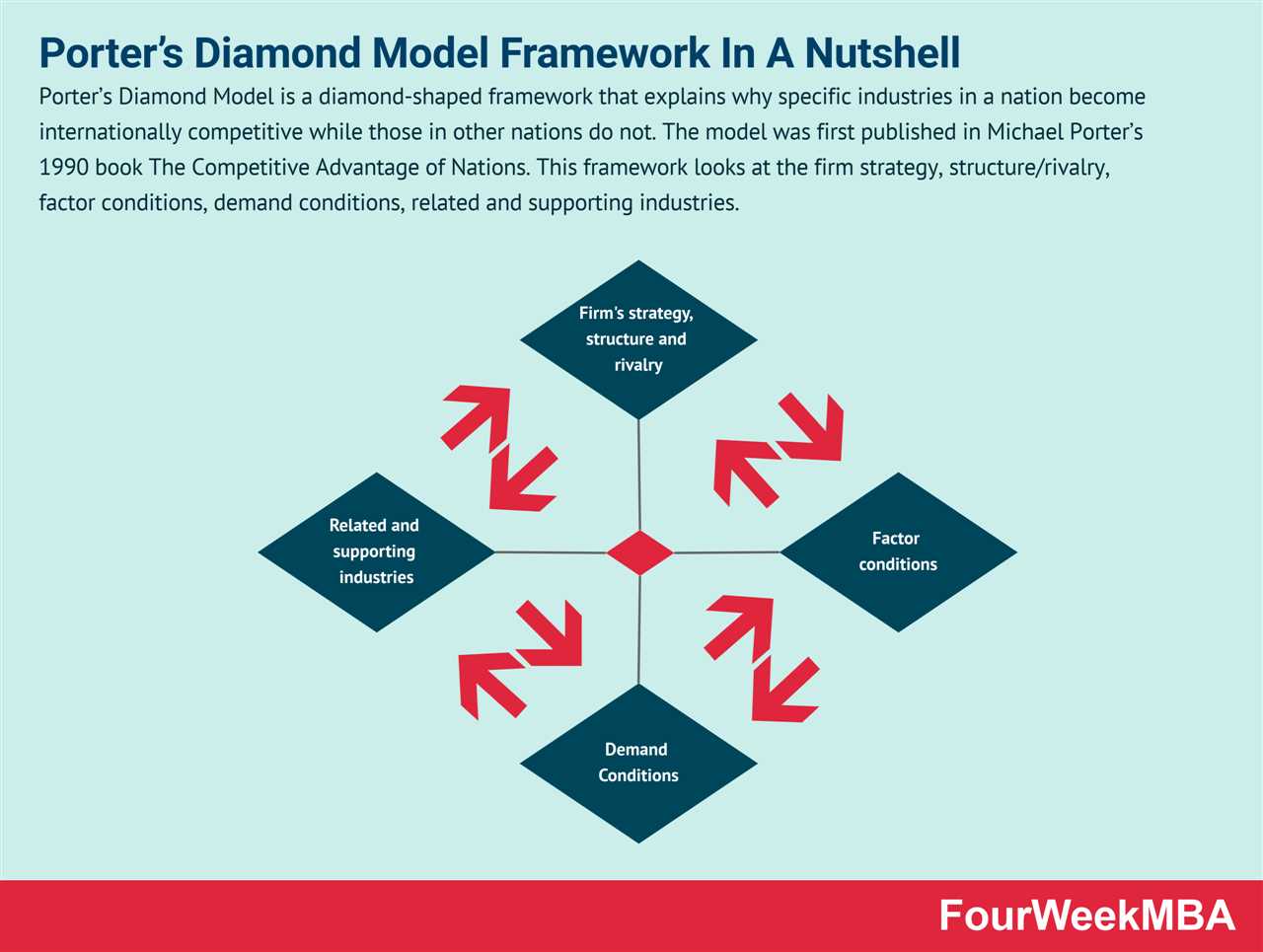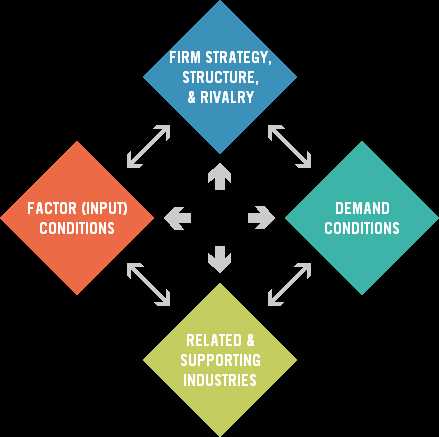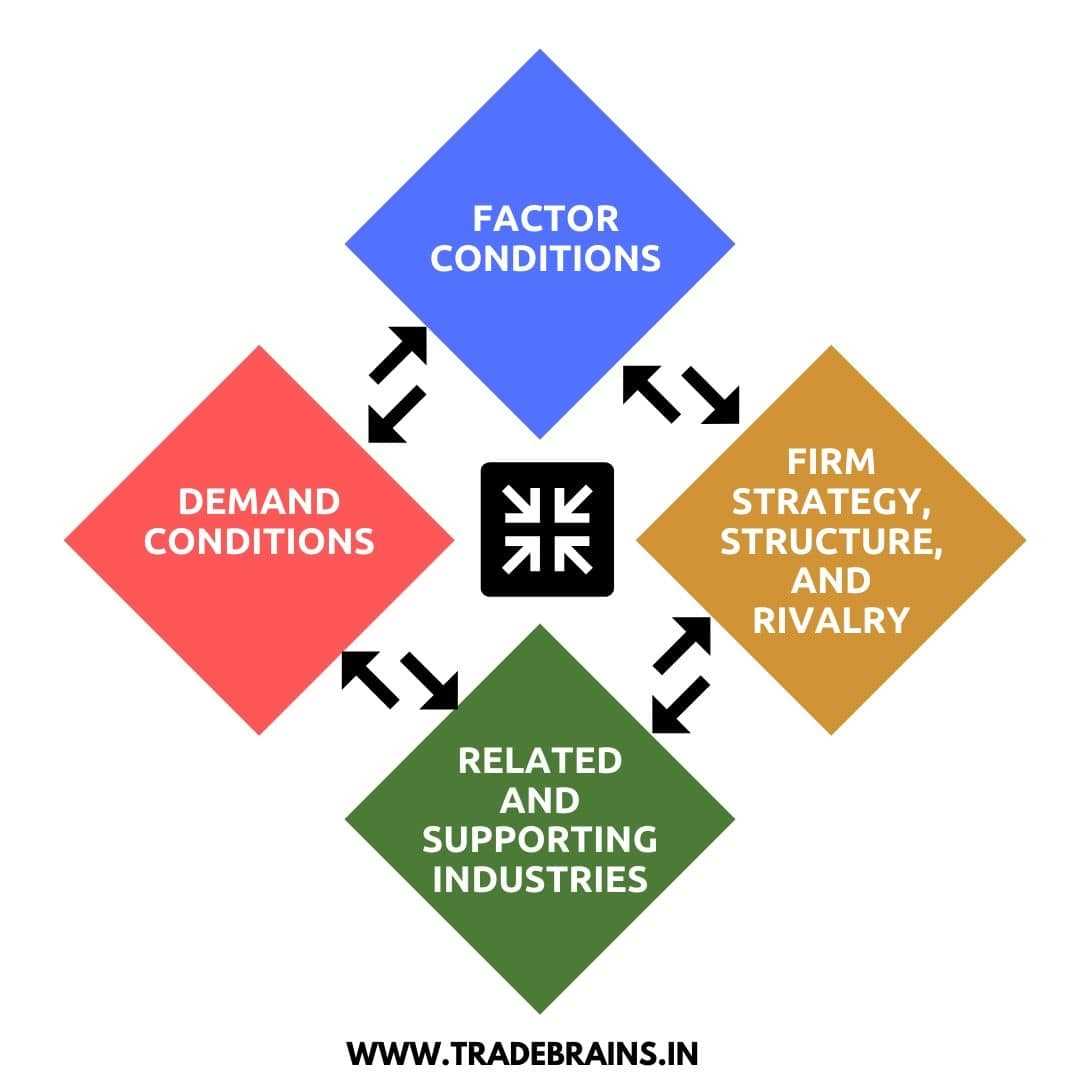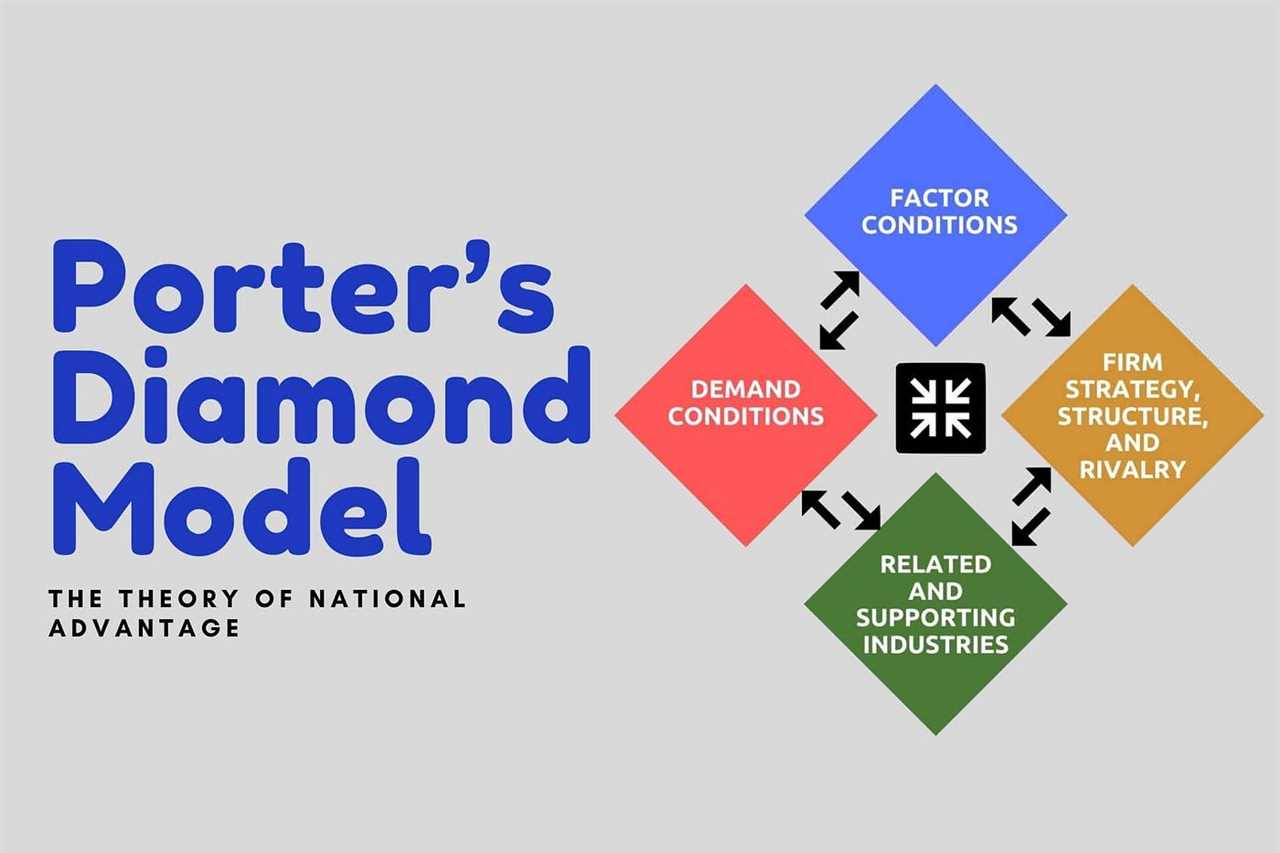What is the Porter Diamond Model?

- Firm strategy, structure, and rivalry: This factor refers to the conditions within the domestic market, including the level of competition, the presence of strong companies, and the overall business environment. A high level of competition and rivalry can lead to increased innovation and productivity.
- Factor conditions: These are the factors of production, such as labor, capital, natural resources, infrastructure, and technological capabilities. The availability and quality of these factors can impact the competitiveness of an industry or region.
- Demand conditions: This factor refers to the characteristics and demands of the domestic market. A sophisticated and demanding domestic market can drive companies to innovate and improve their products and services.
- Related and supporting industries: The presence of strong and competitive related industries and supporting industries can enhance the competitiveness of a particular industry or region. These industries can provide a skilled workforce, specialized inputs, and other resources.
The Porter Diamond Model suggests that these four factors are interconnected and mutually reinforcing. Improvements in one factor can lead to improvements in other factors, creating a positive cycle of competitiveness. The model also emphasizes the role of government and chance events, which can influence the four factors and impact the competitiveness of an industry or region.
The Porter Diamond Model is based on four key concepts that help analyze the competitive advantage of a country or region in a specific industry. These concepts are:
Factor Conditions
Factor conditions refer to the availability and quality of resources within a country that can be used for production. This includes factors such as natural resources, skilled labor, infrastructure, and technological capabilities. The Porter Diamond Model suggests that countries with abundant and high-quality factor conditions are more likely to have a competitive advantage in industries that require those specific resources.
Demand Conditions

Demand conditions refer to the characteristics and preferences of domestic customers. The Porter Diamond Model argues that a strong domestic demand can drive companies to innovate and improve their products and services, making them more competitive in the global market. Additionally, demanding customers can provide valuable feedback and insights that can help companies improve their offerings.
Related and Supporting Industries

Related and supporting industries refer to the presence of supplier industries and other related industries that support the development and competitiveness of a specific industry. The Porter Diamond Model emphasizes the importance of a strong and interconnected network of suppliers, manufacturers, and service providers. This network can facilitate knowledge sharing, collaboration, and innovation, leading to a competitive advantage for the industry as a whole.
Firm Strategy, Structure, and Rivalry
Firm strategy, structure, and rivalry refer to the characteristics of the companies operating within a specific industry. The Porter Diamond Model suggests that intense competition among rival companies can drive innovation, efficiency, and productivity improvements. Additionally, the model emphasizes the importance of a supportive business environment and effective government policies that promote competition and discourage anti-competitive practices.
Application of the Porter Diamond Model

The Porter Diamond Model, developed by Michael Porter, is a tool used to analyze the competitive advantage of a nation or region. It helps identify the factors that contribute to a country’s or region’s ability to compete in a particular industry.
When applying the Porter Diamond Model, there are four key determinants that need to be considered:
- Factor Conditions: This refers to the availability and quality of resources such as labor, capital, infrastructure, and natural resources. Countries or regions with abundant and well-developed factor conditions are more likely to have a competitive advantage in certain industries.
- Demand Conditions: The nature and size of the domestic market play a crucial role in shaping the competitiveness of industries. Strong domestic demand can drive innovation and help companies develop products and services that can later be exported.
- Related and Supporting Industries: The presence of related and supporting industries can enhance the competitiveness of a particular industry. These industries provide inputs, infrastructure, and specialized knowledge that can benefit the industry as a whole.
By analyzing these four determinants, the Porter Diamond Model helps identify the strengths and weaknesses of a country or region in a specific industry. It can also provide insights into potential areas for improvement and help policymakers and businesses develop strategies to enhance competitiveness.

Emily Bibb simplifies finance through bestselling books and articles, bridging complex concepts for everyday understanding. Engaging audiences via social media, she shares insights for financial success. Active in seminars and philanthropy, Bibb aims to create a more financially informed society, driven by her passion for empowering others.
